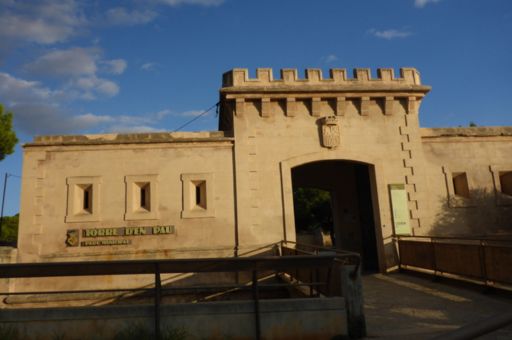Cort’s Department of Culture has drawn up an initial list of buildings and heritage elements that meet the characteristics required by the candidacy.
Palma, 1st August 2024. Palma is taking part in UNESCO’s transnational candidacy proposal for cities that form part of the system of Spanish fortifications in the Mediterranean that date from the 16th to 19th centuries.
The aim is for this candidacy, which also includes, initially, Tortosa, Cartagena, Ibiza and the Menorcan municipality of Es Castell, to be admitted to the Transcultura programme, developed by UNESCO and financed by the European Union.
TDB keeps you informed. Follow us on Facebook, Twitter and Instagram
Palma takes part in a transnational UNESCO candidature made up of cities with Spanish fortifications in the Mediterranean dating from the 16th to the 19th centuries
This initiative is being coordinated by UNESCO expert Jordi Tresserras, with the support of Tortosa City Council and its mayor, Jordi Jordan. On the part of Palma City Council, the Department of Culture, headed by the first deputy mayor, Javier Bonet, has been actively involved in the proposal through the work being carried out by the Directorate General of Heritage and Interpretation of the City, headed by Pilar Ribal.
The proposal is currently in its first phase of preparation, during which Palma has had the opportunity to join the candidacy, along with the rest of the cities mentioned. With a view to the future, the coordinator is taking steps to request the participation of Algeria, Italy and Malta, given the transnational nature of the candidacy.
As part of this initial stage, the municipalities are preparing their own projects with the aim of drawing up a joint list of heritage elements that fit within the framework of the call, which will subsequently be assessed by the UNESCO Heritage Council.
In the specific case of Palma, the list will include buildings of great architectural and historical value that make up the Façana Marítima, such as the Fortí de la Torre d’en Pau, the city walls, which include the Baluard del Príncip, the Baluard de Berard and the Baluard de Sant Pere, the city gates (Porta del Mar, Porta de la Portella and Porta Vella del Moll) and ses Voltes. Likewise, confirmation of the castle of Sant Carles is awaited, and the Bellver Castle will also be included, given the modifications made throughout the 16th century.
In the words of Pilar Ribal, Palma Town Hall “is taking part in this initiative with the utmost enthusiasm and great expectations, as we consider this to be a unique opportunity to form part of a project that encompasses other territories and which, under the endorsement of UNESCO, will enable the richness and diversity of our heritage to be made known”.
The director general also stressed that the transnational nature of the proposal “is an aspect worth highlighting, because it is fully in line with the criteria that, for some time now, UNESCO has been valuing when granting support to the projects it promotes”.
